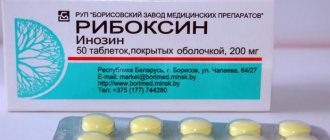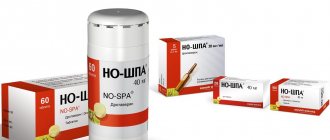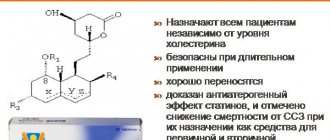The targeted search, development and implementation of new highly effective drugs with minimal side effects are an urgent task of modern pharmacology, in particular sports pharmacology. Such drugs include vasoactive agents, nootropics, antihypoxants and antioxidants, as well as drugs with neurotrophic and neuromodulatory effects. One of these drugs is mildronate (meldonium dihydrate), which in its structure is a synthetic analogue of the precursor of carnitine biosynthesis - gamma-butyrobetaine. Like carnitine, it is involved in the energy metabolism of cells and thereby prevents the activation of glycolysis reactions, which dominate under conditions of tissue hypoxia, affecting the oxidation of free fatty acids [1]. Side effects of mildronate include dyspepsia, agitation, tachycardia, changes in blood pressure, and skin itching. Contraindications to its use are hypersensitivity and organic lesions of the central nervous system. In addition, it is believed that patients with chronic liver and kidney diseases should use caution during long-term use of mildronate.
The domestic drug Mexidol (2-ethyl-6-methyl-3-hydroxypyridine succinate) has a multicomponent spectrum of pharmacological effects and a multifactorial mechanism of action. Among them, the most important are its antioxidant, antihypoxic, membranotropic effects, the ability to modulate the functioning of receptors and membrane-bound enzymes and restore neurotransmitter balance [2, 3]. The mechanism of the antihypoxic action of Mexidol is associated primarily with its specific effect on energy metabolism, which is due to the succinate included in its composition, which, under hypoxic conditions, entering the intracellular space, is capable of being oxidized by the respiratory chain. Mexidol is an antihypoxant with direct energizing action, the effect of which is associated with the influence on endogenous respiration of mitochondria and activation of their energy-synthesizing function. The effect of Mexidol is due to an increase in compensatory metabolic flows that supply energy substrates to the respiratory chain, in this case succinate [3, 4]. The antioxidant and membrane-protective effects of Mexidol limit the destruction of lipid peroxidation products and contribute to the stabilization of cell membranes, the preservation of their ordered structural and functional organization, necessary for the functioning of membrane-bound receptor complexes, enzymes and ion channels. Due to the presence of succinate in the structure of the drug, Mexidol improves the energy balance of the cell and restores, under conditions of acute oxygen deficiency, the impaired process of oxidative phosphorylation associated with the limitation of the NADH oxidase pathway [2, 3].
Mexidol has a pronounced anxiolytic effect. It is able to eliminate fear, anxiety, tension, restlessness; has an anti-stress effect, for example, during stress in a new environment, anxiety and fear, and anticipation of pain [3]. Analysis of the mechanism of implementation of the anxiolytic effect of Mexidol showed that the drug does not have a direct affinity for benzodiazepine and GABA receptors, but has a modifying effect on them, enhancing their ability to bind [5, 6]. These effects are complemented by Mexidol’s unique ability to increase the body’s resistance to various extreme factors, such as stress, conflict situations, electric shock, physical activity, hypoxia, lack of sleep, and various intoxications [3, 7].
In addition, the spectrum of pharmacological activity of Mexidol shows anti-ischemic and neuroprotective effects, the ability to improve and stabilize brain metabolism and cerebral blood supply, correct disorders of the regulatory and microcirculatory systems, improve the rheological properties of blood, inhibit platelet aggregation, reduce total cholesterol levels, have an anti-atherosclerotic effect and cause activation of the immune system [3, 5, 7]. Along with this, the drug has virtually no side effects of traditional neuropsychotropic drugs [2].
Thus, thanks to its mechanism of action and a wide range of pharmacological effects, Mexidol influences not only the main links in the pathogenesis of various diseases associated with free radical oxidation processes, but is also capable of correcting oxygen-dependent pathological conditions in acute and chronic fatigue and other pathological conditions in sports, especially thereby increasing physical performance and reducing fatigue.
The purpose of the study was to study the effect of Mexidol in comparison with mildronate on the physical performance of animals in an experiment with a single and subchronic administration.
General information about Mildronate
Mildronate is used in the treatment of various diseases to improve intracellular metabolism, to increase vitality and has a general strengthening effect. The active ingredient is meldonium.
Due to its cardioprotective properties, it is used in the treatment of heart diseases associated with ischemia (reduces necrotic zones during myocardial infarction, reduces the frequency and duration of angina attacks).
Effects of the drug Mildronate on the body
The drug is able to improve blood supply to the brain, which leads to improved cognitive functions, increased performance, and shortens the recovery period after strokes. It fights hypoxia at the cellular level - this allows it to be used in sports to restore the strength of athletes between performances and during training.
This drug is produced by a Latvian pharmacological company in various forms for ease of use:
- capsules;
- syrup;
- solution for injection (intramuscular, intravenous and parabulbar).
Mildronate has a preventive effect on the course of the disease, improving the course of the disease, alleviating the patient's condition, but in the acute period it may not have the desired effect. It has a beneficial effect on the emotional background, reduces the impact of stress factors on the body, reduces anxiety, and improves sleep.
Pharmadynamics and therapeutic effects
There is an opinion that Mexidol and Mildronate have the same effect, however, it is not entirely true. Despite the fact that the drugs have many of the same effects, the difference between them is quite significant.
The presence of the active ingredient in Mildronate, meldonium, gives the drug the following effects:
- Angioprotective. Suppresses the production of inflammatory mediators. Normalizes the permeability of the walls of blood vessels, increasing their tone. Helps improve blood microcirculation.
- Angianal. Helps eliminate coronary insufficiency and actively fights angina attacks. Thanks to the drug, oxygen delivery to the heart muscle increases.
- Antihypoxic. Increases the tolerance of the body as a whole or its individual tissues to a lack of oxygen caused by various reasons.
- Cardioprotective. Corrects and restores myocardial activity.
Mildronate promotes:
- improving cellular metabolism;
- normalization of blood microcirculation by eliminating vasoconstriction;
- slowing down the process of necrosis;
- reducing the period of recovery of the body after surgical interventions or illnesses;
- improving myocardial contractility;
- increasing the body's resistance to physical and mental stress;
- increasing immunity at the cellular level;
- elimination of some eye diseases.
Mexidol has the following effects:
- Antioxidant. Neutralization of free radicals leads to increased immunity, normalization of the functional abilities of all organs, prevention of aging, etc.
- Membrane stabilizing. Helps restore and increase the stability of cell membranes, their structure and properties.
- 3Antihypoxic. Participates in supplying cells with oxygen when it is lacking.
- Nootropic. Normalizes nutrition and blood circulation in the brain. This effect improves higher mental properties (memory, perception, speech, thinking). In addition, the drug protects the gray matter of the brain from overload and oxygen deficiency.
- Anticonvulsant. Eliminates and prevents the appearance of involuntary muscle contractions.
- Anxiolytic. Helps cope with feelings of anxiety, restlessness, and normalize the emotional background.
Mexidol also reduces the toxicity of antifungal agents and antibiotics when used.
The use of Mexidol leads to:
- to increase the level of dopamine in the brain, normalize metabolism in the organ and improve cerebral blood supply;
- improving blood microcirculation, its rheological parameters and reducing red blood cell aggregation;
- reduction of low-density lipoprotein levels;
- stabilization of cell membranes;
- normalization of metabolism and blood flow in ischemic areas of the heart muscle;
- reducing the area affected by necrosis;
- restoration and improvement of cardiac electrical activity and organ contractility;
- restoration of higher mental properties of the brain;
- improving the mental state after suffering stressful conditions;
- elimination of manifestations of intoxication (neurological and neurotoxic) after prolonged consumption of alcoholic beverages.
Both drugs are used not only to eliminate unpleasant symptoms, but also during sports to increase the body's endurance and recovery after sports competitions.
General information about Mexidol
The main effect of Mexidol is to reduce tissue hypoxia by improving the ability of tissues to absorb oxygen supplied by the blood. Due to this, the cognitive functions of the brain are improved, seizures of various etiologies are stopped, anxiety and stress on the body are reduced.
Thanks to its antioxidant properties, this drug slightly improves immunity. Mexidol has a strong effect on higher nervous functions. When taken, attention, thinking, and the ability to remember increase, emotional reactions are normalized, anxiety and fear are reduced, and sleep is normalized. This allows it to be widely used in neurology.
Mexidol is produced by several domestic manufacturers; it is based on a substance - ethylmethylhydroxypyridine succinate. It has various forms of release:
- pills;
- solution for injection (intramuscular, intravenous).
The principle of action of the drugs
Mexidol's main effect in the human body is on the cell membrane. This drug has a membrane-protective effect, which affects lipid peroxidation of the cell wall. At the same time, the viscosity of the cell membrane decreases and its fluidity increases, the cell becomes more resistant to external influences.
The binding capacity of membrane receptors also increases, synaptic transmission and transport of neurotransmitters improves. Thanks to these effects, the nootropic effect of the drug is manifested (memory, speech, thinking improves).
The antihypoxic effect of Mexidol in cardiomyocytes manifests itself in the form of a decrease in the area of necrosis and ischemia during myocardial infarction, and an improvement in the contractility of cardiac muscle tissue. The damaging effects of hypoxia and other unfavorable factors on the human body are reduced.
Once in the body, Mildronate blocks the enzyme carnitine, while having a vasodilating effect on blood vessels, reducing platelet aggregation, and reducing the content of toxic products of anaerobic glycolysis in cells. This leads to the restoration of the relationship between the cell's need for oxygen and its supply with the blood.
Evaluation of the effectiveness and safety of Mildronate
Thus, tissues are saturated with oxygen-rich blood, and glycolysis in cells becomes more efficient. Tolerance to physical activity increases. Complex therapy for myocardial infarction, including the use of Mildronate, reduces the area of necrosis, which allows patients to recover faster and reduce the rehabilitation period.
Material and methods
The study was conducted on 123 male outbred white mature mice weighing 22-25 g without somatic or infectious pathology. The animals were obtained from the Stolbovaya nursery of the State Institution NTSBMT (Moscow region). The keeping of animals complied with the standards defined by regulatory documents1.
The experimental groups were formed by random selection using body weight as the leading indicator (the spread in initial weight between and within groups did not exceed ±10%).
The study was carried out in two series: with a single and subchronic administration (5 days) of drugs, in each of which the experiment was carried out in 6 groups of 9-12 animals each. Mexidol was administered intraperitoneally in doses of 50, 100 and 200 mg/kg, the reference drug - mildronate - in doses of 50 and 100 mg/kg. Control animals received distilled water in an equivalent volume (0.1 ml per 10 g of body weight). The last injection of drugs was carried out 40 minutes before testing.
Swimming is considered a heavy physical dynamic activity. To assess the effect of the substance on physical performance, a swimming test with additional load was used, which was carried out in accordance with the methodological recommendations for the preclinical study of drugs with a nootropic type of action [8]. Each animal was placed one at a time in a vessel (18 cm in diameter and at least 40 cm high) with pre-settled water at a temperature of 25–26 °C. Swimming was performed with a weight attached to the root of the tail, the mass of which was 8% of the body weight of the mice. The animals swam with the load until they got tired. An indicator of physical fatigue was being under water for more than 10 s. At this moment the animal was quickly removed from the water. The effectiveness of the substances was assessed by the duration of swimming of the experimental groups of animals in comparison with the control groups.
Statistical processing of experimental data was carried out using statistical packages BioStat for Windows and Excel package. The average values and standard error of the mean (Mean±SEM), as well as the median and quartiles (Me, 25%÷75%) were calculated. The normality of distribution was checked using the Shapiro-Wilk test. The significance of differences was calculated using nonparametric analysis for independent variables (Mann–Whitney U test).
Indications and contraindications
Both drugs are used for various pathologies and conditions. Mildronate is prescribed for:
- IHD and CHF.
- Pre-infarction and myocardial infarction.
- CVB (cerebral crises in which oxygen enters the brain in insufficient quantities).
- Dyshormonal cardiomyopathy.
Mexidol is used for:
- Chronic cerebral circulatory failure.
- Damages of cerebral vessels.
- VSD.
- Atherosclerosis.
- Tissue hypoxia.
Mildronate is strictly contraindicated during pregnancy and breastfeeding, children under 18 years of age and patients suffering from increased intracranial pressure, as well as individual intolerance to the constituent components.
In case of severe liver or kidney diseases, it can be used only after an examination. In patients with crisis hypertension or hypotension, use is possible, but examination and medical supervision is necessary.
Compatibility of Mexidol and Mildronate
Although the drugs have similar effects, their interaction enhances the therapeutic effect of the treatment.
Specialists can combine drugs:
- for brain pathologies;
- ischemic stroke (together with Actovegin);
- cerebral ischemia, as well as vestibulo-atactic syndrome (appearance of spots before the eyes, nausea, dizziness, etc.);
- abnormal heart rhythm;
- non-inflammatory damage to the heart muscle;
- withdrawal syndrome.
As part of complex treatment, it is possible to use various forms of drugs
It is impossible to give an exact answer: which is better, Mildronate or Mexidol. Each drug is designed to get rid of certain diseases and the advisability of their use depends on the choice of the doctor.
Instructions for use
For coronary heart disease, Mexidol is used for 1-1.5 months, and this course is repeated 2 times a year, mainly in spring and autumn. Treatment begins with 1-2 tablets (125-250 mg) and titrates until the effect is achieved. The maximum dose can be 800 mg - 6 tablets.
The course of treatment with meldonium drugs is usually long, from several weeks to several months. The daily dose for heart disease is 500-1000 mg, divided into 2 doses. For cardialgia associated with cardiomyopathy, the therapeutic effect is achieved with a dose of 500 mg once a day.
In the acute period of stroke, Mildronate can be prescribed first in the form of intravenous injections and after 2 weeks in the form of tablets for 2 months. In the treatment of chronic alcohol intoxication, a 1-2 week course of taking the drug at a dose of 500 mg 4 times a day is used.
It is important not to exceed the established maximum permissible dose of 2 g, as it is possible to develop undesirable side effects in the form of excessive excitability of the nervous system.
Since the drugs are similar in their action, many are concerned about the question of whether it is possible to take these drugs at the same time. Since the mechanism of action of these drugs is different, when used together, a summation of effects is observed. The dose of drugs when taken together is calculated in the same way as separately. That is, 500 mg of each product.
Reviews
Elena, 34 years old, Kyiv My father has a strong craving for alcohol. He usually drinks for about two weeks, and it’s hard to break out of the binge. His heart begins to ache, his hands shake, convulsions appear, feelings of anxiety, fear, a depressive state gives way to aggression, and sleep is disturbed. Encodings don't help. It becomes scary for his health. The narcologist advised me to take Mexidol at the same time as Mildronate. A few days of treatment with these drugs allows dad to return to normal, he begins to feel well, and his behavior becomes adequate.
Igor, 44 years old, Moscow, university teacher Lately he has become very unbalanced. At work I lashed out at students and colleagues, my wife and children constantly irritated me, and I developed a feeling of fear. Because of his character, he was constantly in conflict with someone. Friends advised me to drink Mildronate. I started taking one capsule in the morning and evening. It was possible to fall asleep only in the morning, almost before getting up. The condition only worsened. I had to see a doctor. As it turned out, Mildronate should not be taken immediately before bedtime. The specialist advised me to undergo a course of treatment with Mexidol. The drug really helped me. Now the neurotic manifestations have disappeared. Thanks Mexidol.
Irina Vasilievna, 60 years old, pensioner Several years ago I began to feel unpleasant symptoms: strong heartbeat, alternating with interruptions, shortness of breath, chest pain on the left side. The doctor diagnosed coronary heart disease and prescribed Mildronate. The medicine is quite expensive, but completely worth it. Not only has my health improved markedly, but my performance has also increased. Now I work in the garden with my children and feel almost no fatigue.
Main differences
The main difference between Mildronate and Mexidol is their composition, which determines the properties of the medications, and thanks to which you can understand the difference between them. The first drug contains Meldonium, the second one contains ethylmethylhydroxypyridine succinate.
When taking Mildronate, a number of important effects are observed:
blood supply to organs with oxygen-rich blood improves;- myocardial contractility increases, while the frequency and strength of angina attacks decreases;
- tolerance to physical activity increases by reducing oxygen starvation of tissues;
- improves heart function and blood supply to cardiomyocytes by reducing ischemia.
Mexidol increases the body's resistance to adverse factors (ischemia, hypoxia, chemical intoxication), has a membrane-protective effect, improves the rheological properties of blood, and relieves withdrawal symptoms caused by prolonged alcohol consumption. Effective for nervous tics and increased emotional stress, improves cognitive functions of the brain.










